Carbon isotopes
Type of resources
Topics
Keywords
Contact for the resource
Provided by
Years
Formats
Representation types
Update frequencies
-
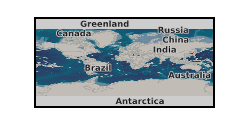
Palynofacies, microcharcoal, clay mineralogical and carbon isotope mass spectrometry measurements from the Late Pliensbachian (934 – 918 mbs) of the Mochras core, Cardigan Bay Basin, NW Wales, UK. Data description: This dataset of the Mochras borehole contains palynofacies, microcharcoal, clay mineralogical data, bulk organic carbon-isotopes, TOC and CaCO3 data from the interval 934 – 918 mbs. This dataset extents the previously published dataset (951 – 934 mbs) deposited at: https://doi.org/10.5285/d6b7c567-49f0-44c7-a94c-e82fa17ff98e and discussed in the published paper by Hollaar et al. (2021) https://doi.org/10.1038/s43247-021-00307-3. The dataset is also linked to the XRF dataset https://doi.org/10.5285/c09e9908-6a21-43a8-bc5a-944f9eb8b97e Damaschke et al. (2021) which also covers the study interval of the here deposited dataset of the Mochras core. This dataset covers part of the Upper Margaritatus Zone in the Mochras core and covers the onset of the Late Pliensbachian positive carbon-isotope excursion. This data was collected, interpreted and analysed by Teuntje Hollaar, Claire Belcher, Stephen Hesselbo, and Jean-Fran?ois Deconinck. The dataset was created within the scope of the JET project (Integrated understanding of Early Jurassic Earth system and timescale) - https://gtr.ukri.org/projects?ref=NE%2FN018508%2F1. This project has received funding from the International Continental Scientific Drilling Programme (ICDP) and the UK Natural Environment Research Council (NERC).
-
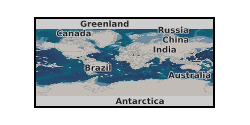
Organic carbon and bulk nitrogen isotope and abundance data and metal abundance data from the Mesoarchean VMS deposit and associated strata. Detailed information is given in Stueeken, E.E., Boocock, T.J., Robinson, A., Mikhail, S. and Johnson, B.W., 2021. Hydrothermal recycling of sedimentary ammonium into oceanic crust and the Archean ocean at 3.24 Ga. Geology, 49(7), pp.822-826.
-

Analysed trace element data and radiocarbon data from five existing marine sediment cores from the NE Pacific margin (45-50N) that intersects the major water masses of the N Pacific, from a depth transect (700-3300m)
-
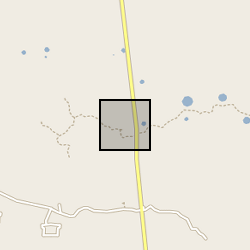
Dataset contains an interannual to sub centennial resolution record of carbonate oxygen and carbon isotopes, bulk sediment geochemistry and sedimentology from a 2.95 metre-long core (YC2) from Yaal Chac. The core was dated using a combination of radiocarbon dates and short-lived radio-isotopes. Data are presented in Metcalfe et al (2022) Quaternary Science Reviews https://doi.org/10.1016/j.quascirev.2022.107445
-
Noble gas and clumped methane data for samples from Anyue gas field, China (NERC Grant NE/T004452/1)
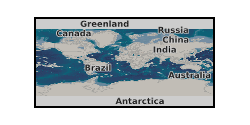
This dataset contains 6 tables covering all analytical data for samples collected from the Anyue gas field, central Sichuan Basin, China. Table 1 includes major gas species and stable carbon and hydrogen isotopes. Table 2 includes results for methane clumped isotopes and calculated methane formation temperatures of gas samples. Table 3 includes noble gas concentrations. Table 4 includes noble gas isotopic ratios. Table 5 includes parameters used in methane emission model and calculating total volume of methane emission. Table 6 includes gas composition and stable carbon and hydrogen isotope characteristics of major gases produced in the pyrolysis experiments (thermally equilibrated methane between 400~500 in theory) and working reference gas, and their methane clumped isotope values.
-
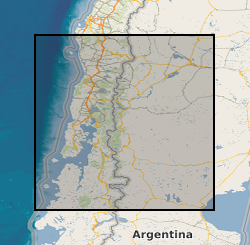
Stratigraphic and ecological data from tidal marsh sites in south-central Chile. Includes stratigraphy, diatom assemblages and radiocarbon dates from fossil cores and diatom assemblages from modern tidal marsh samples. Data were collected to provide evidence for multiple great earthquakes in south-central Chile, and enable the reconstruction of vertical land-level changes associated with these earthquakes. Data are from tidal marsh sites within the 1960 earthquake rupture area along the Chilean subduction zone (37.5 - 46 degrees South).
-

Organic carbon and nitrogen and bulk nitrogen isotope data and metal abundance data for siltstones and shales of the Mesoproterozoic Diabaig Formation. For a detailed description and interpretation, see Stüeken, E.E. and Prave, A.R., 2022. Diagenetic nutrient supplies to the Proterozoic biosphere archived in divergent nitrogen isotopic ratios between kerogen and silicate minerals. Geobiology.
-

Photographs, 18O/16O isotopic ratios, XRF-derived elemental and N, C concentration data are provided for sediment cores from Deep Sea Drilling Project Site 225, central Red Sea. This site was originally drilled in April 1972 by rotatary drilling to recover cores through parts of the Plio-Pleistocene sediments for studies of past Red Sea water properties and regional climate. The rotary drilling disturbed the sediments by varied amounts, though left some 1.5-m sections of core almost intact. The X-ray fluorescence (XRF) data comprise elemental proportions for the core archive sections selected where they showed the least drilling disturbance. These and the core photographs were obtained at Kochi University, Japan, using an ITRAX core scanner during 2023 and 2024. Given the age of the cores, the archive sections are not perfectly flat, hence the ITRAX-derived elemental data may be distorted by varied distance between the sensor and the core, as well as by cracks within the core. The user needs to judge these data against the core photographs. As the lighter 16O isotope is evaporated preferentially over 18O and tends to get locked up in ice sheets during glacial periods, measurements of the ratio 18O/16O in carbonate sediments are often useful for recording evidence of global climatic cycles. In the Red Sea, the ratio is further affected by local evaporation, as the basin has been variably isolated from the Indian Ocean, partly as a result of sea-level variations affecting the exchange of water between the basins. Samples of ~20 cm3 were selected with two sets of intervals. Coarse-interval sampling was chosen spanning the Plio-Pleistocene for reconnaissance, while denser sampling was carried out across particular intervals of scientific interest. Within these intervals, the shells of foraminifera were separated into different species. Shells of Cibicidoides mundulus were primarily selected for measurements of 18O/16O. Analyses were carried out in 2024 at the University of Southampton (UK) using a Kiel carbonate device coupled to a Mat253 IRMS. XRF core scanning and sampling were carried out by technical staff of the Marine Core Research Institute, Kochi University under supervision of the IODP Core Curator Yusuke Kubo. Diederik Liebrand disaggregated the samples, separated the foraminifera shells and carried out the oxygen isotopic measurements. Selected samples were also analysed for nitrogen and carbon contents (weight percent of bulk sample in columns B and C) at the University of Liverpool by Steve Crowley.
-

The dataset includes organic carbon and nitrogen isotope data, as well as elemental abundance data from marine sediments that were obtained by push corers from hydrothermal seeps in the modern Guaymas Basin, Gulf of Mexico. Also included are pore water measurements of ammonium concentrations and nitrogen isotopes of dissolved ammonium, as well as sediment temperatures.
-

Stable Isotope and trace element analyses (Ca, Sr, Mg, Fe and Mn concentrations) derived from Cretaceous Belemnites including Duvalia tornajoensis, D. cf. lata constricta, D. binervia, D. cf. emericii, Hibolithes, H. cf. jaculoides, Berriasibelus, Castellanibelus and Pseudobelus.
 NERC Data Catalogue Service
NERC Data Catalogue Service